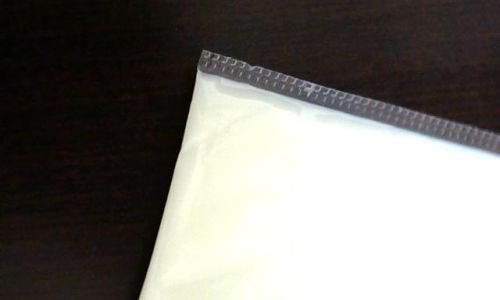Table of content
Shredded cheese is a pantry staple for countless households, prized for its convenience in recipes ranging from pasta bakes to homemade pizzas. However, once the bag is opened, maintaining its quality and safety becomes a priority. Improper storage can lead to spoilage, mold growth, or freezer burn, rendering the cheese inedible and wasteful. This article explores actionable strategies to extend the shelf life of opened shredded cheese, ensuring every shred remains flavorful, safe, and ready for your next culinary adventure.
Understanding the Enemy: Why Shredded Cheese Spoils
Before diving into storage solutions, it’s essential to grasp why shredded cheese deteriorates. Cheese is a dairy product rich in moisture, fats, and proteins—a trifecta that bacteria and molds adore. When exposed to air, humidity, or fluctuating temperatures, these microorganisms thrive, causing spoilage. Shredding cheese increases its surface area, accelerating oxidation and moisture loss, which can lead to dry, crumbly texture or unwanted rancidity.
Immediate Actions After Opening
The clock starts ticking the moment you tear open a bag of shredded cheese. To maximize freshness:
- Reseal Properly: If the original packaging is resealable, press out excess air before sealing. For non-resealable bags, transfer the cheese to an airtight container immediately.
- Minimize Exposure: Avoid leaving the cheese uncovered on countertops or in the fridge. Every second of air exposure invites moisture loss and contamination.
- Avoid Cross-Contamination: Use clean utensils (not hands) to scoop cheese, preventing the transfer of bacteria from fingers or other foods.
Refrigeration: The First Line of Defense
The refrigerator is your best ally for short-term storage. However, even here, nuances matter:
Optimal Temperature
Set your fridge to 40°F (4°C) or below. Higher temperatures accelerate bacterial growth, while colder settings may cause freezer burn if stored long-term.

Container Selection
- Original Packaging: If the bag is resealable and undamaged, it can suffice for a week or two. However, most commercial bags are not designed for long-term use, as their seals may weaken.
- Airtight Containers: Glass or plastic containers with tight-fitting lids are ideal. They create a moisture-resistant barrier and prevent the cheese from absorbing fridge odors (e.g., onions, leftover fish).
- Vacuum Sealing: For advanced users, vacuum-sealed bags remove air entirely, slowing oxidation. This method can extend shelf life by several weeks.
Layering Technique
Place a sheet of parchment paper between the cheese and the container lid. This absorbs excess moisture, preventing clumping without drying out the cheese.
Location, Location, Location
Store the container in the main compartment of the fridge, not the door. The door’s temperature fluctuates more due to frequent opening, which can harm the cheese’s stability.
Freezing: A Game Changer for Long-Term Storage
If you won’t use the cheese within a month, freezing is the way to go. Follow these steps for optimal results:
Pre-Freezing Preparations
- Portion Control: Divide the cheese into meal-sized portions (e.g., 1-cup batches) to avoid thawing more than needed.
- Flat Freezing: Spread portions on a baking sheet lined with parchment paper. Freeze until solid (1–2 hours), then transfer to a freezer-safe bag. This prevents clumping.
Container Choices
- Freezer Bags: Use thick, airtight bags designed for freezing. Squeeze out excess air before sealing.
- Airtight Containers: If using plastic containers, leave ½ inch of headspace to account for expansion during freezing.
Labeling
Always date the container. Frozen shredded cheese can last 6–8 months, but quality diminishes over time.

Thawing Safely
- Refrigerator Thawing: Transfer frozen cheese to the fridge 12–24 hours before use. This slow thaw preserves texture.
- Cold Water Thawing: For quicker results, seal the cheese in a waterproof bag and submerge in cold water for 1–2 hours. Replace the water every 30 minutes.
- Avoid Microwaving: Rapid thawing can cause uneven melting and texture changes.
Signs of Spoilage: When to Toss It
Trust your senses:
- Visual Cues: Mold (fuzzy spots in green, blue, or black), excessive clumping, or discoloration (yellowing or drying).
- Odor: A sour, ammonia-like smell indicates bacterial activity.
- Texture: Excessively dry, slimy, or greasy shreds are unsafe to eat.
Note: A little clumping is normal if the cheese absorbed moisture. Simply break it apart with a fork—it’s still safe if no other spoilage signs are present.
Creative Uses to Prevent Waste
Even with proper storage, life happens. If your cheese nears its expiration, repurpose it creatively:
- Bake It: Use in casseroles, quiches, or twice-baked potatoes.
- Melty Toppings: Sprinkle on soups, chili, or roasted vegetables just before serving.
- Cheese Crisps: Bake shreds into crispy, low-carb snacks.
- Compound Butter: Mix with softened butter for a savory spread.
Common Mistakes to Avoid
- Storing in Original Bag Indefinitely: Even resealable bags degrade over time. Transfer to a durable container after a few weeks.
- Ignoring Fridge Odors: Cheese easily absorbs smells. Store it away from pungent foods.
- Freezing Without Portioning: Thawing and refreezing damages texture.
- Using Warm Cheese: Adding cold cheese straight from the fridge to hot dishes can cause seizing. Let it warm slightly first.
Beyond the Fridge: Alternative Storage Hacks
For cheese enthusiasts seeking edge solutions:

- Cheese Paper: Specialty waxed paper regulates moisture and allows the cheese to breathe. Wrap shreds in cheese paper before storing in a container.
- Silicone Bags: Reusable, airtight silicone bags are eco-friendly alternatives to plastic.
- Mason Jars: Small mason jars with two-piece lids create an airtight seal and stack neatly.
The Science of Cheese Aging (And Why It Matters)
Cheese is a living product, with residual cultures and enzymes active even after shredding. Proper storage slows this aging process, preserving the cheese’s intended flavor profile. Hard cheeses like cheddar or parmesan tolerate longer storage than soft varieties like mozzarella or brie.
Final Thoughts: A Balance of Convenience and Care
Shredded cheese offers unparalleled convenience, but its perishability demands mindfulness. By mastering refrigeration, freezing, and creative repurposing, you can enjoy this kitchen staple without waste. Remember: the key to longevity lies in minimizing air exposure, controlling moisture, and adhering to temperature guidelines. With these strategies, your opened shredded cheese will remain a reliable ingredient for weeks—or even months—to come.
So the next time you reach for that bag of cheddar or mozzarella, do so with confidence. Your future self (and your recipes) will thank you.






0 comments